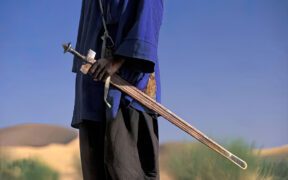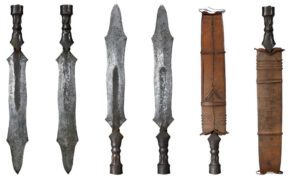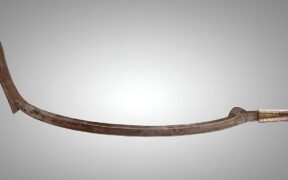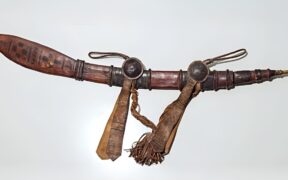Our content features commercial links to our products, committed to transparent, unbiased, and informed editorial recommendations. Learn More
Maasai Sword: The East African Lion Blade
NO AI USED This Article has been written and edited by our team with no help of the AI
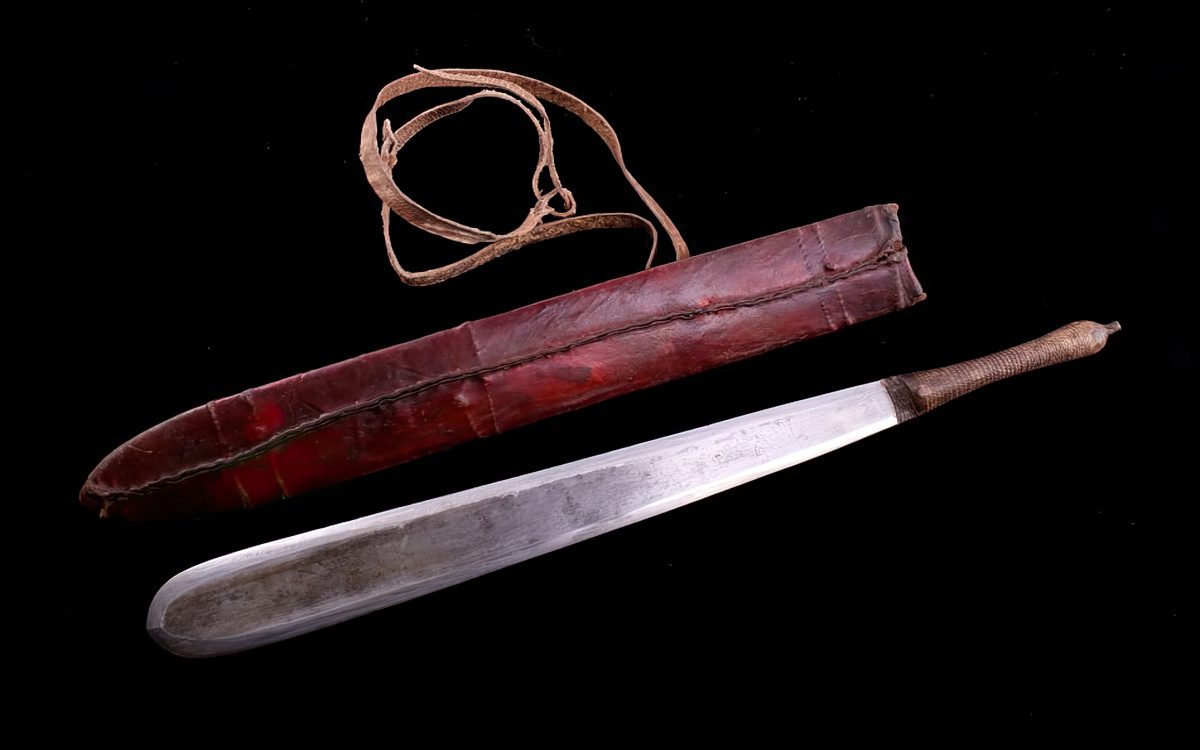
African swords can look exotic but terrifying, with several parts that can inspire fictional stories. Some African blades are simple but effective for fighting and survival. The Maasai sword, also called Ol Alem and Seme, was an African sword used frequently and with great success while featuring an elemental design.
The Ol Alem Maasai Sword has a blade that works like a Machete for everyday tasks but performs as a Greek Xiphos on the battlefield. In this article, we’ll discuss the Maasai Sword, its most popular types, and its characteristics. We will then examine how the Maasai sword is used and how it came to be.
Types of Maasai Sword
The blade design largely categorizes Maasai swords into two categories that function similarly but look different. The widespread adoption of European steel blade styles among African swordsmiths is largely responsible for this classification. These are the most often seen Maasai swords.
Flat Blade
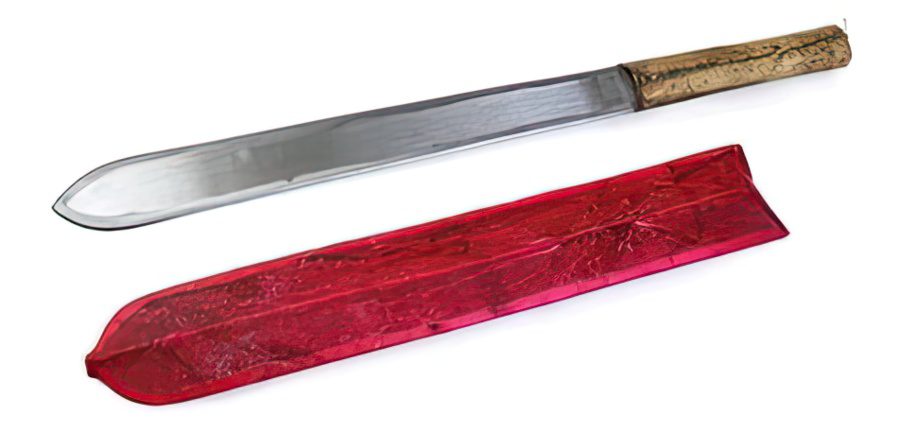
Maasai Swords can feature flat blades made of iron or steel. These blades are imported from Europe, sometimes as a steel block that has been melted down or directly placed onto a locally made hilt. Flat European blades feature no type of fuller and are mostly used for slashing with their sharp edges.
Mid-Rib Blade
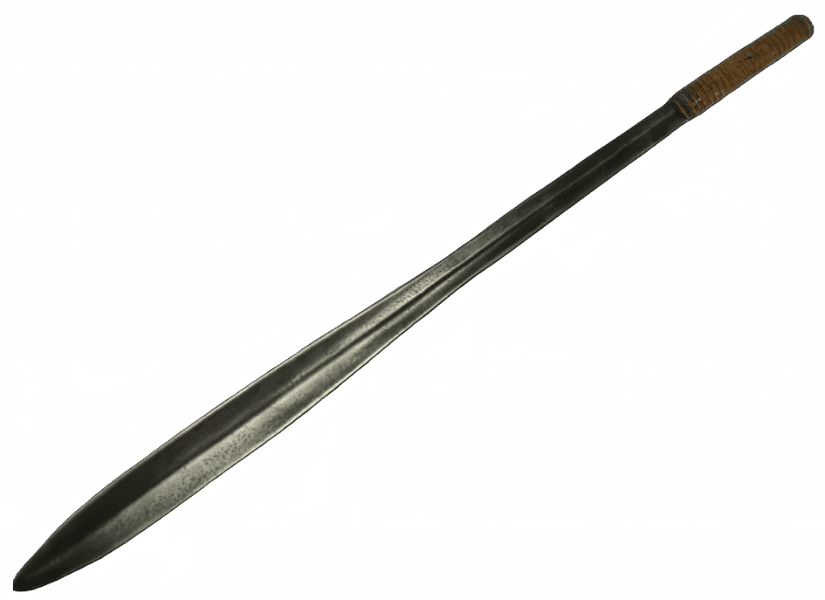
The traditional Maasai Sword features a mid-rib section on its blade, which is seen as a historical Ol Alem sword that followed a design commonly seen in North, West, and East Africa. While the other type is seen as a slashing weapon, some sword enthusiasts assume the mid-rib blade to be more of a thrusting-like tool, resembling a dagger.
Characteristics of the Maasai Sword
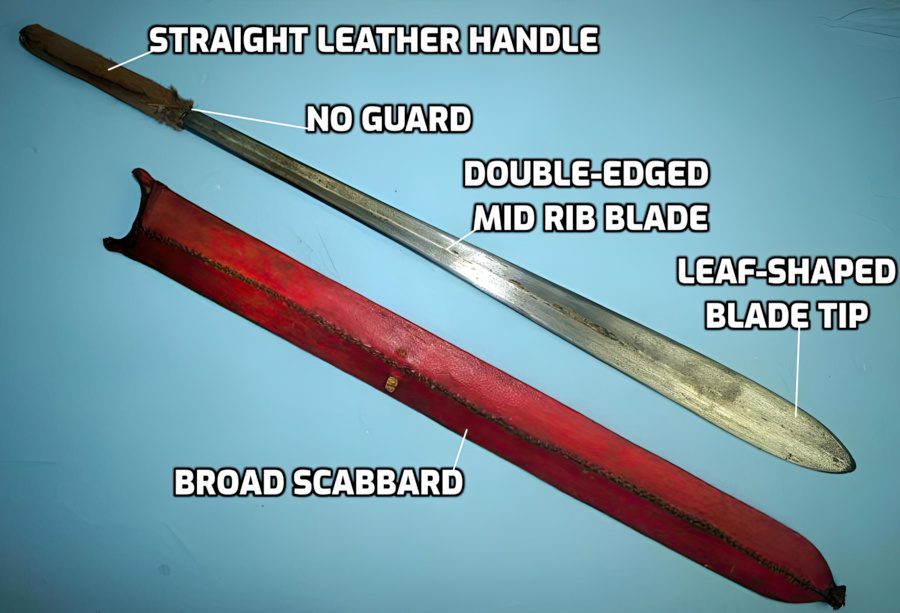
Maasai Swords are one of the most basic weapons in the arsenal of African blades. Being a hybrid between a dagger and a short sword gives them everyday tool-like functions. They also work well as primary war instruments combined with a large shield and smaller secondary weapons.
Blade
The blade of the Maasai Swords is straight and double-edged, meaning sharpened on each side. These Ol Alem blades are typically leaf-shaped and broaden toward the mid-section of the blade and taper to a very sharp tip at the end. Although this is the most common case, Maasai Swords made with imported European steel are straight without this leaf-shaped design.
Guard
Maasai Swords do not feature any type of guard because this African weapon was used with a large shield for protection. Another possibility is that it was used daily in agriculture, cooking, and bush clearing, where a guard would hinder its effectiveness.
Handle
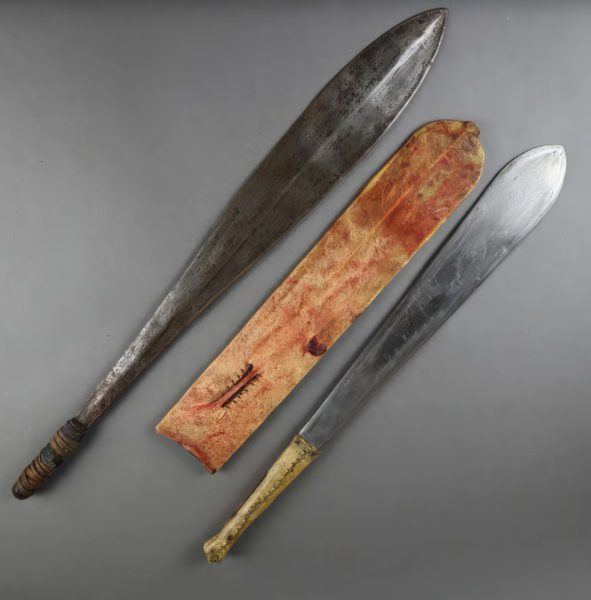
The handle of a Maasai sword is straight and open and, depending on the size of the blade, can be many different lengths. The most common type of handle is a piece of wood wrapped in leather that holds the blade’s tang, or the leather alone wrapped around the full-tang blade, growing with the width of the blade.
Some Maasai Sword’s handles are made strictly for use with only one hand, while others allow the user to hold it with both, using it as a two-handed slashing weapon. The most usual handle length for the Maasai or Ol Alem Sword is around six inches (15 cm).
Pommel
The pommel is the ending of the Maasai Sword’s handle, which acts as a counterweight of the blade while holding the full-tang blade together. Some ceremonial and newer Maasai Swords feature a metal cap pommel, while traditional ones do not.
It is a simple design with a broadening piece of wood added on the end of the handle or just leather wrapped harder and stronger.
Scabbard

The scabbard of the Maasai Sword is straight and follows the same design as the blade. It is usually much broader than the neck of the blade due to the broadening of the blade’s leaf-shaped tip. If the blade is without the leaf shape, the scabbard will be the exact width of the blade.
The Ol Alem blade usually has a leather scabbard with wraps and a belt tightened to its wielder. There are usually scuff marks in the center of the blade, which are to hold the mid-rib section.
Weight
The African Maasai Seme Ol Alem Sword is light due to its simple yet effective design. It can be comfortably worn around the waist of the user while being a terrifying weapon of destruction. A common weight for the Maasai Sword is around 1.5 lbs (700 grams), depending on its size and length.
Size and Length
Some Maasai Ol Alem tools are referred to as daggers, knives, machetes, or swords. This results from the blade’s various lengths, with the most common between 15 to 31 inches (40 to 80 cm), making it primarily a one-handed weapon.
Uses for the Maasai Sword
The Maasai Sword is used as a one-handed tool, although there were cases where larger blades allowed it to be used with both hands. The primary use of the Maasai sword was slashing, although many would argue that thrusting was its main trait. It is a weapon of self-defense but primarily an everyday tool that can be used by men, women, and children.
Warfare and Combat
The Maasai Sword is a traditional weapon of war for the Maasai people of Africa. It saw frequent use in combat dating back to antiquity because this weapon is an extended version of a dagger or knife used in the past. It is important to note that the Maasai was a secondary, not a primary, weapon.
Throwable spears used in melees were primary weapons, and the Maasai was used more in close combat with a sizable shield or against unarmored thieves.
Ceremonial and Prestige
The Ol Alem or Maasai Sword is part of the regalia for the Maasai people. There are ceremonial types of Maasai Swords that could be ornamented, and owning them was an achievement. European travelers often brought them back from their travels.
Everyday Instrument
Maasai Sword or Mese sword is part of the 14 most important tools used in history and modern times for the Maasai people. It is ranked highly due to its versatility in agriculture and cooking. The Massai sword is an excellent tool for cutting meat, fruits, and vegetables, clearing through thick forests, and for hunting.
History and Origins of the Maasai Sword
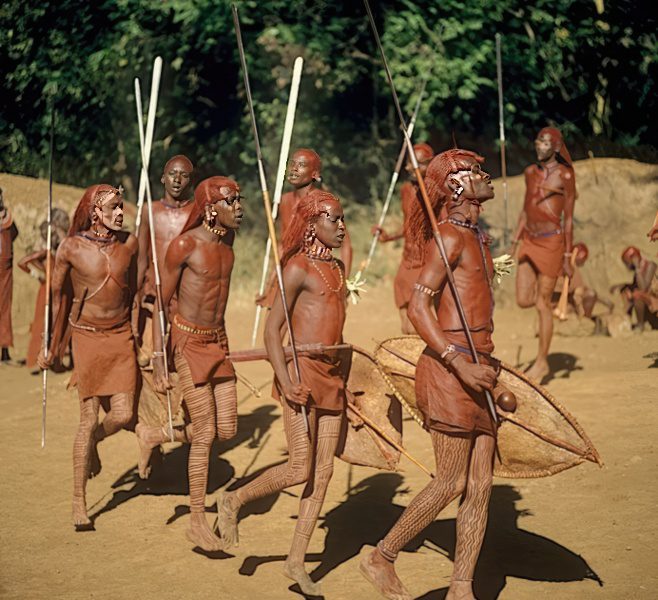
The Maasai Sword is a weapon and everyday tool used primarily by the Maasai people of East Africa, known as Kenya and Northern Tanzania. Today the Maasai people are split into 12 different groups, each using the Maasai, Ol Alem, or Mese sword as their main sidearm.
The exact origin and date of the Maasai Sword are difficult to trace because this type of blade is an evolution of the smaller dagger or knife used in antiquity. There are some instances of this similar sword being used in different regions of Africa that resemble the Ida Sword.
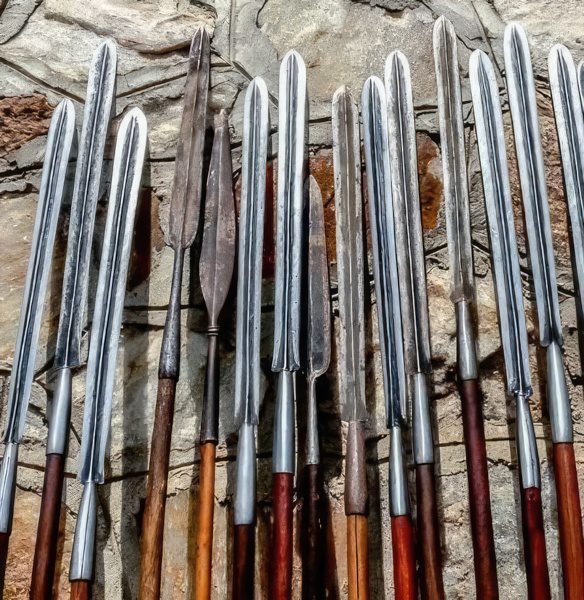
The Maasai Sword is sometimes called “the Lion Sword,” as it could have resulted from a spear called the Maasai Lion Spear used for hunting lions or other game animals. During the last few centuries, the Maasai people were primarily shepherds, and their main food source was farming. The leaf-shaped Lion Spear point could have been worn on the waist of the Maasai people for self-protection, resulting in the Maasai Sword we know today.
Today the Maasai Sword still plays a large role in the culture of the Maasai. The swords were always carried by Maasai warriors and were a rite of passage for boys reaching manhood between the ages of 15 to 21. When the status of manhood was reached, a Maasai Sword was given, and from that day, the young man was allowed to carry a sword.
